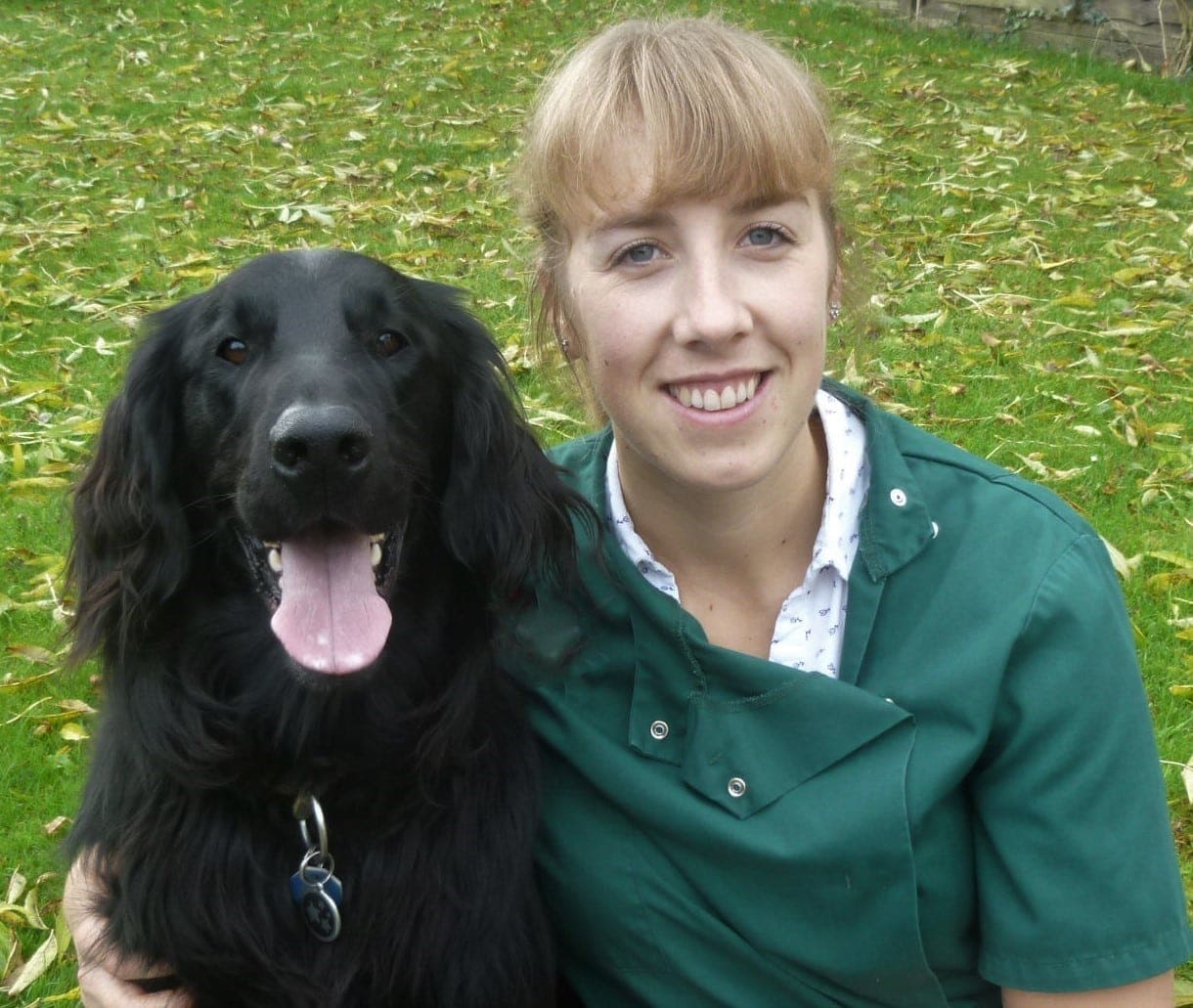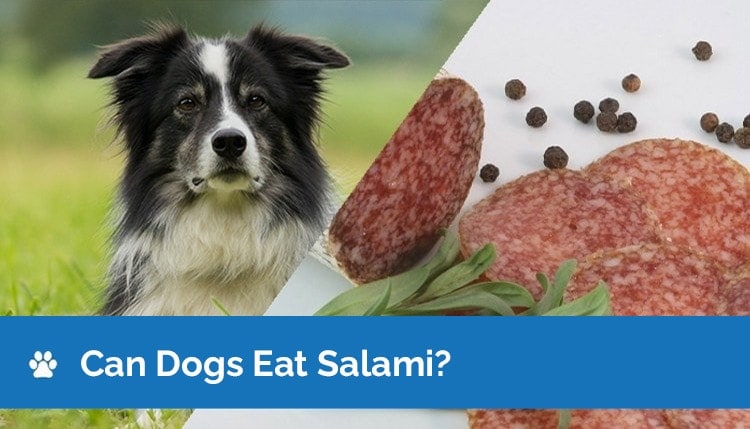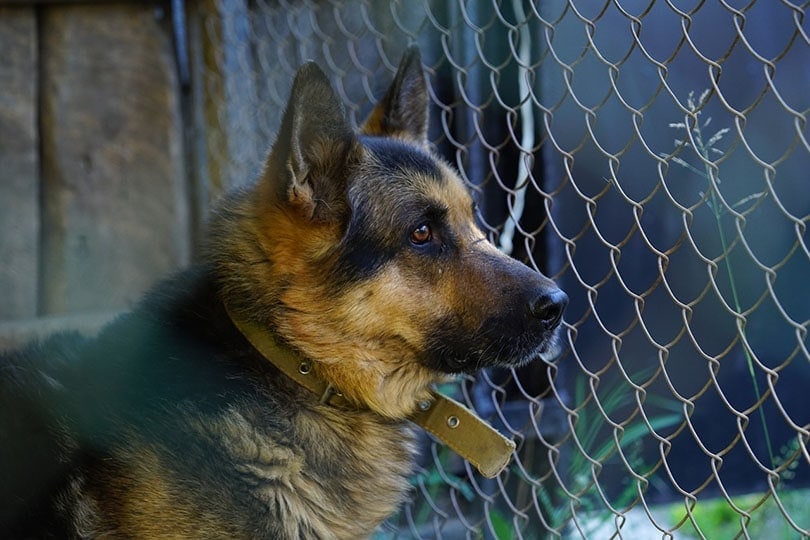Why Do Dogs Chew on Wood? Here’s How to Stop It

Updated on
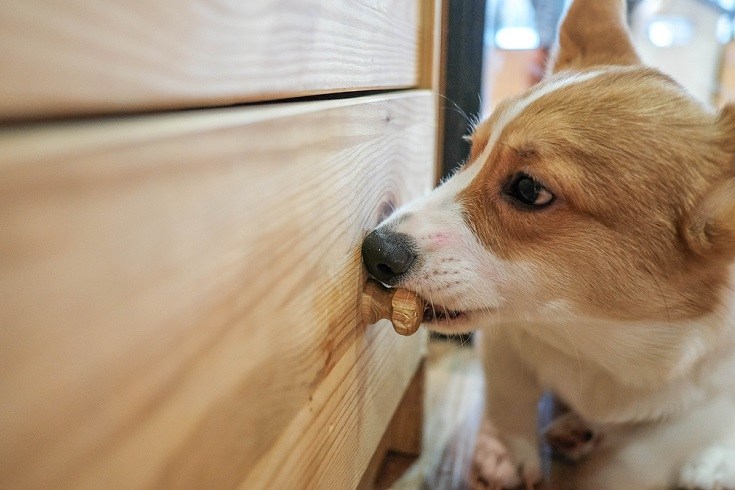
Is your dog a tiny Chewbacca? Do they seem to just love chewing on your wooden furniture, floors, and finishes?
Well, there’s no need to worry about your wood anymore. Here’s exactly what you need to do to help your pooch kick his wood-chewing habit. Keep reading to learn why dogs chew on wood and how to stop them:
Why Is My Dog Chewing on Wood, Anyway?
Dogs will chew on things they’re not supposed to for a lot of reasons. The three most common culprits behind the chewing are puppy teething, boredom, and separation anxiety.
While it’s natural for a puppy to chew on anything and everything, it can be destructive behavior if it’s an older dog who should know better doing the chewing.
Puppy chewing is caused by the fact that their baby teeth are being replaced by permanent ones and their gums are inflamed and bothering them. Additionally, as they grow, they explore their world with their mouths. So anything from your favorite pair of shoes to your wooden table is fair game for your puppy to chew on.
If your adult dog has started chewing on wood, it could be a sign of boredom or separation anxiety. Is your dog getting enough mental and physical stimulation? Are you leaving them alone for long, long stretches of time? Your pooch may be channeling that energy into chewing.
Why Is It Bad for My Dog to Chew Wood?
Besides the obvious damage to your possessions, your dog’s adoration for chewing on wood can be hazardous to his health. Even if your dog doesn’t eat the wood, they can still swallow small splinters or pieces. Those small splinters can get lodged in their throat or digestive tract and can cause infections and blockages.
Moreover, splinters can also perforate or embed their mouth, intestine, or esophagus. This will result in an astronomical vet bill for you and invasive surgery for your pooch.
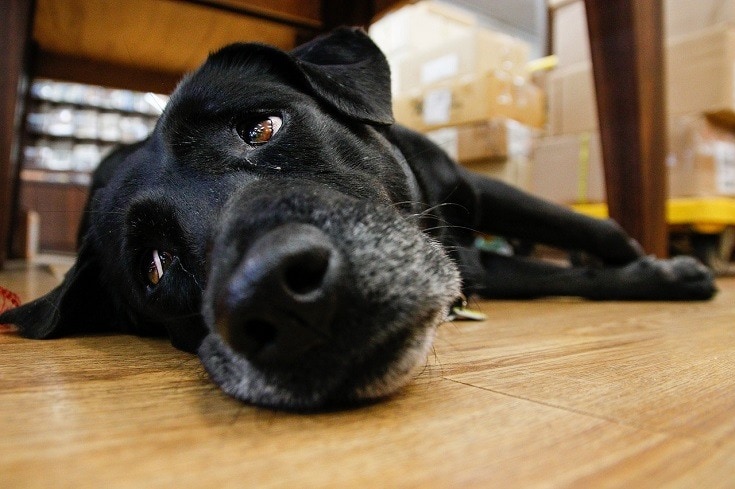
How to Keep Your Dog from Chewing on Wood
Now that you understand why your dog may be chewing on wood and the reasons why this behavior is so bad for them, let’s explore some ways to stop it.
- Daily Exercise: Tire your pet out by giving them physical activity every day. Take them for a jog or play with them in the yard. If you work long hours, consider hiring a daily dog walker or enrolling your pet in a doggy daycare.
- Give Them an Alternative: If your dog loves chewing, they’ll definitely adore chew toys! Invest in some strong, durable toys that will provide your pup with hours of chew time. Avoid real bones or small toys that your pet could choke on.
- Clear Your Yard: Thoroughly go through your yard and pick up sticks, logs, or other pieces of wood that your dog could be chewing. If you have a pile of firewood, elevate it on a holder or put a tarp over it to prevent your pet from accessing it.
- Make a DIY Deterrent Spray: Relying on an “out of sight, out of mind” method won’t work for your large wooden table, bookshelf, or wooden baseboards. Instead, make your own dog-chewing-deterrent spray with bitter apple. Simply combine one cup of white vinegar and one cup of apple cider vinegar and put the solution in a plastic spray bottle. Then, go to town spraying down all of your wood. It’s a safe, non-toxic solution that won’t stain or discolor your possessions. When you first use the deterrent spray, apply a small amount of it to your dog’s mouth so they can learn how unpleasant the taste is. Reapply the spray every day for up to 4 weeks.
- Use a Pet Camera: If your dog has separation anxiety and resorts to chewing as soon as you leave, invest in a pet camera to monitor the bad behavior. As soon as you see your pet start chewing, use a vocal command through the two-way audio to get them to stop. Some pet cameras even come with a remote-control laser dot that will redirect your dog’s attention.
- Create a Safe Space: Whether it’s a cozy corner or a crate, create a safe sanctuary for your anxious pet where he can feel relaxed and comfortable while you’re gone.
- Training: Chew toys alone won’t always cure a chewing problem. You also have to work on your pet’s training. You’ll need to supervise your pup during all waking hours of the day until you’re sure the chewing is under control. Whenever you catch them licking the wood, chewing is most likely going to follow. Say—don’t shout—a phrase like “uh-oh” and gently move their mouth away from the item and give them the chew toy instead. Praise them when they start chewing on that. Never use negative reinforcement as this will not be effective.
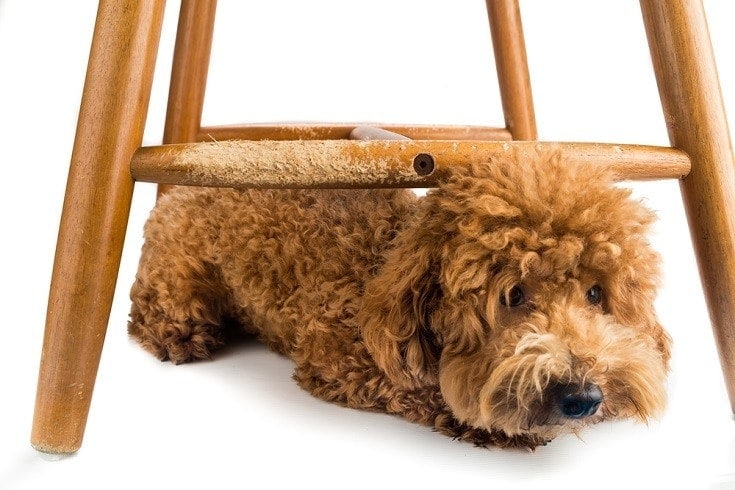
Final Thoughts
Your dog’s wood-chewing habit is both destructive and dangerous. While they may simply be teething and will grow out of this bad behavior, the chewing may also be caused by boredom or anxiety.
Keep your dog entertained with plenty of safe chew toys and daily exercise. Make a DIY chewing-deterrent spray and clear your yard of sticks and logs. Most importantly, use positive reinforcement training techniques to nix the bad behavior. Over time, your pup will learn to steer clear of your wood and only chew on items they are supposed to chew on.
Related Reads:
- How to Stop your Dog from Chewing on the Carpet
- How to Stop a Dog from Chewing on Furniture (6 Simple Tricks)
Featured Image: nuu_jeed, Shutterstock



